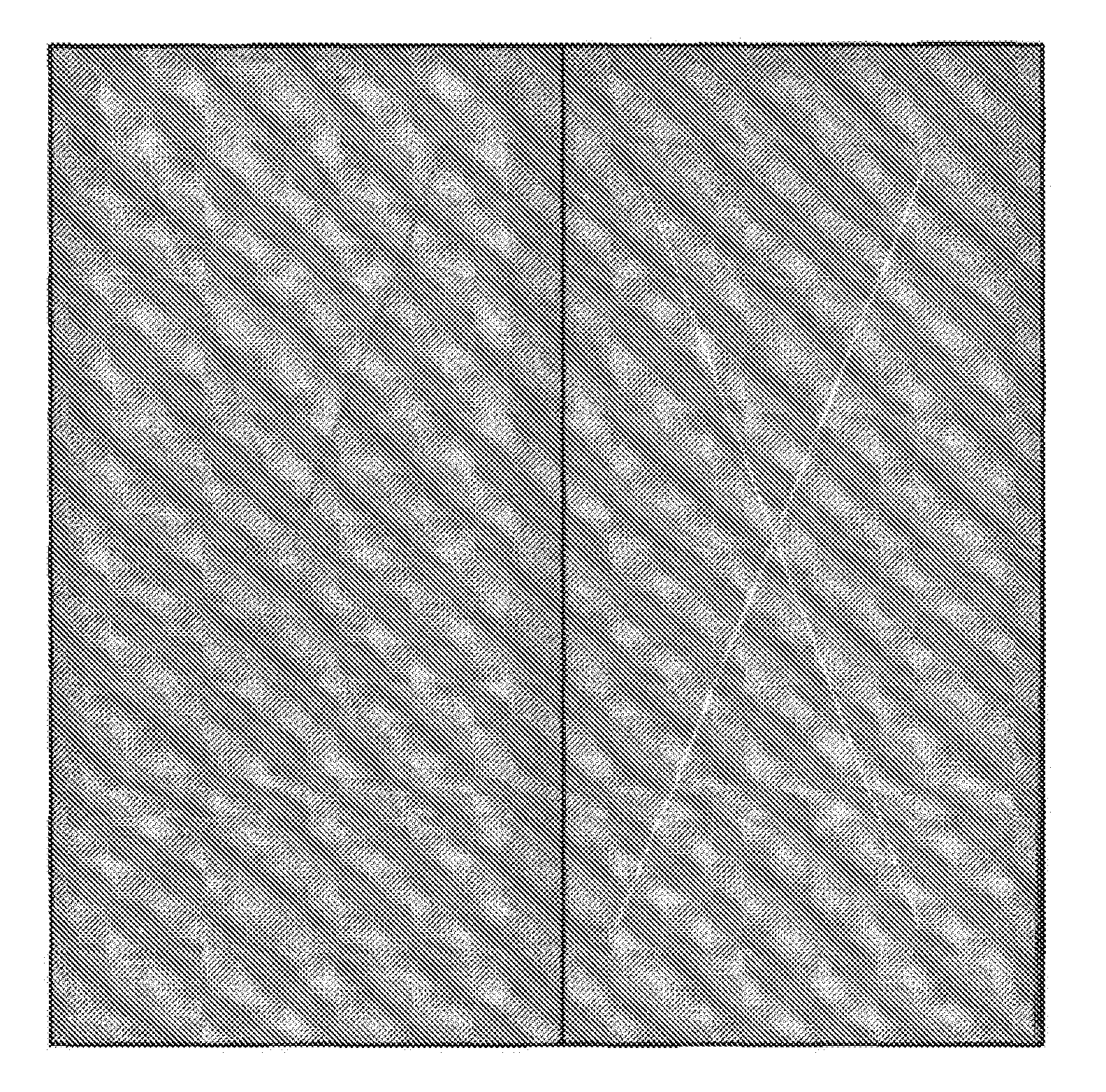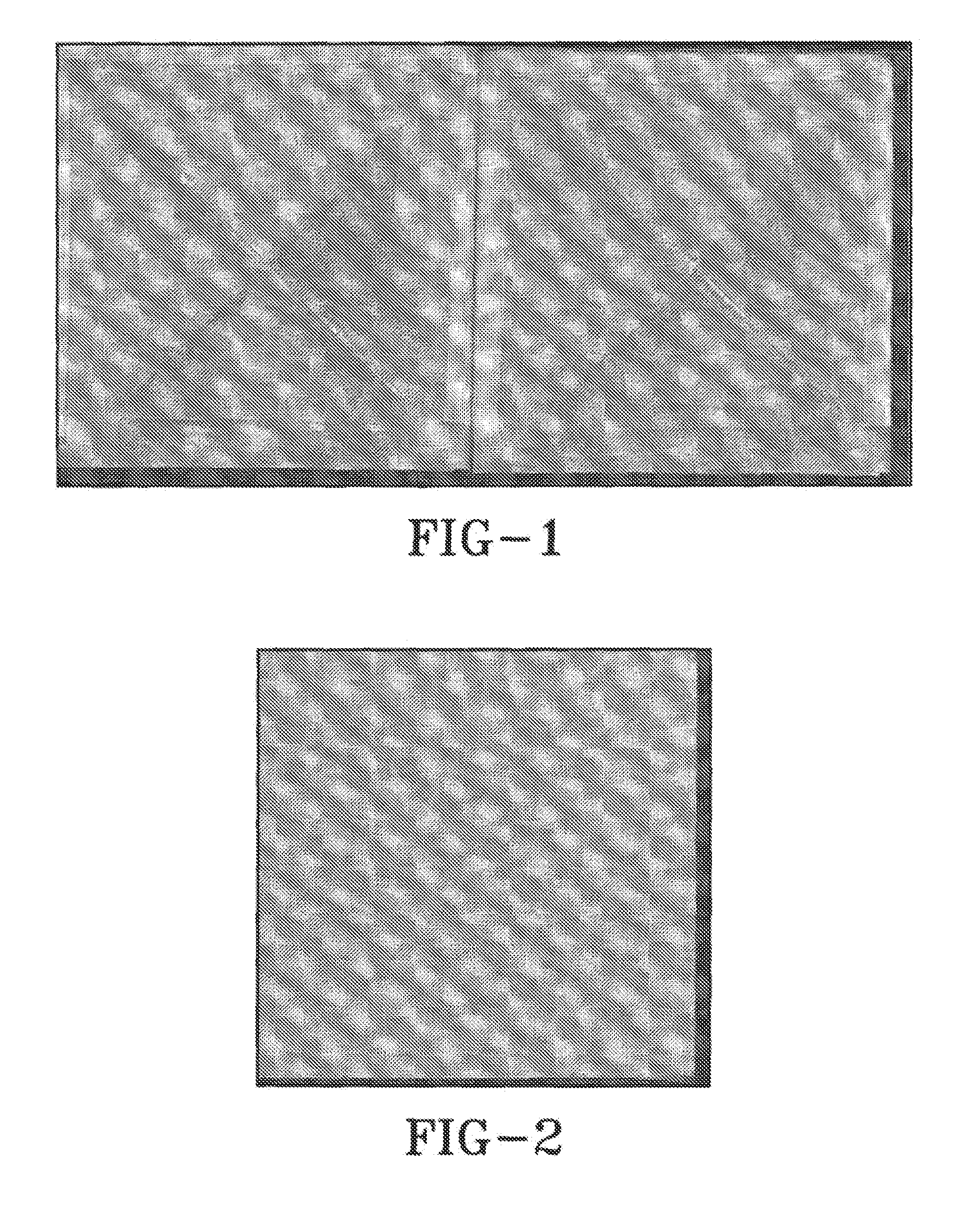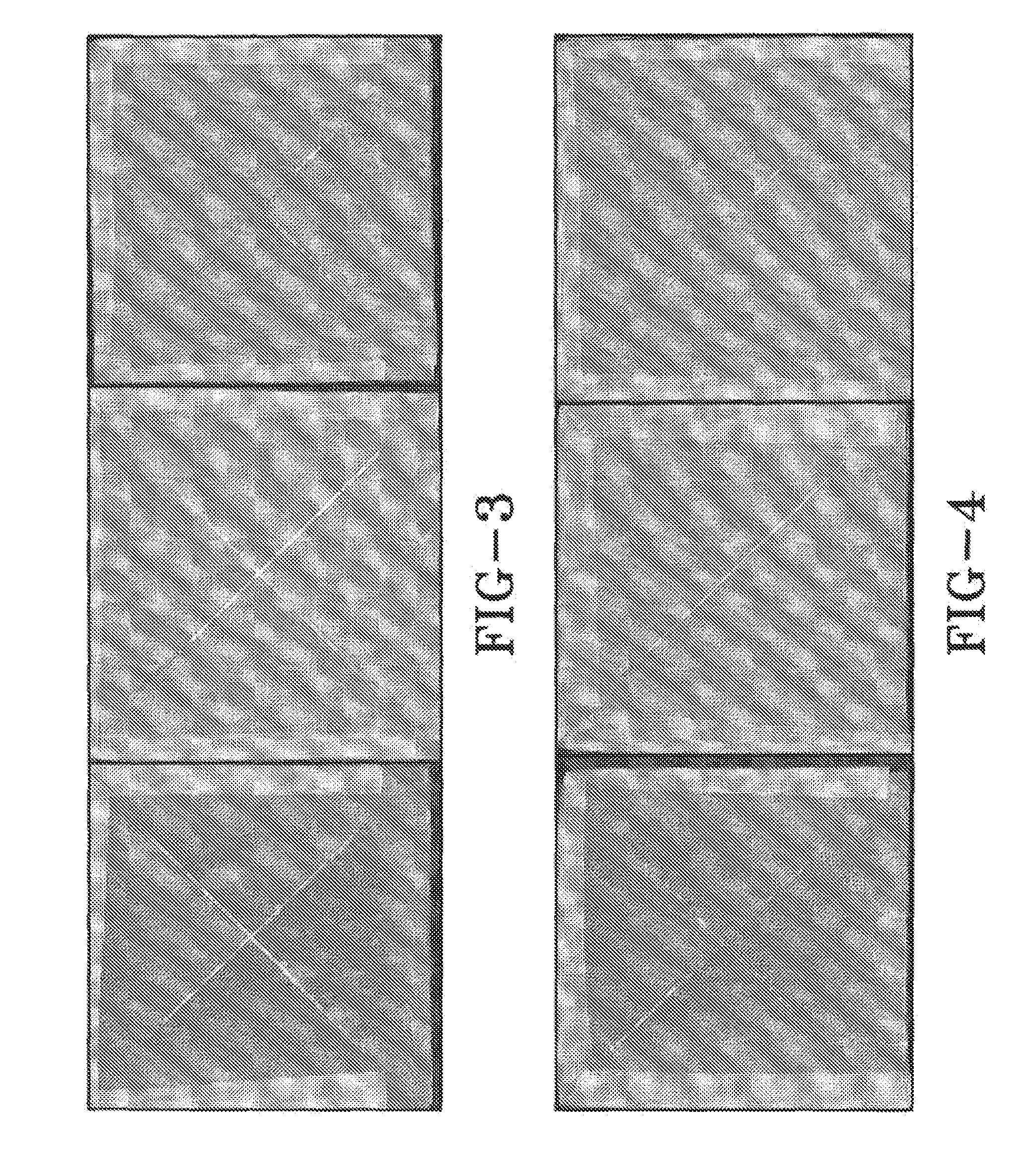Coated Aluminum Alloy Pigments and Corrosion-Resistant Coatings
- Summary
- Abstract
- Description
- Claims
- Application Information
AI Technical Summary
Benefits of technology
Problems solved by technology
Method used
Image
Examples
example 1
[0072]Composition and process to apply a semi-conducting corrosion inhibiting coating to active aluminum alloy pigments. To one liter of distilled water, add 3.0 grams of basic chromium sulfate, 4.0 grams of potassium hexafluorozirconate, and 0.12 grams potassium tetrafluoroborate. Stir solution until all chemicals are dissolved. Let stand for seven days before use to allow for the inorganic polymer of chromium sulfate to complex with the fluoride salts and equilibrate. Dilute this solution to 40% by volume with distilled water. Approximately 100 grams of Al-5% Zn-0.015% In particles were added to a one-liter flask. Particles processed were 40 to 100 microns in diameter and spherical. To the flask, add approximately 500 milliliters of inorganic polymer solution at ambient conditions and agitate or stir for approximately five minutes. The powder tends to settle quickly in the solution so constant agitation is necessary. After five minutes, decant off the inorganic polymer solution.
[0...
example
[0074]Composition and process to apply a semi-conducting corrosion inhibiting coating to 99.99% pure aluminum pigments. An identical process to Example 1 was followed, except the particles coated were globular 99.99% pure aluminum and 10 to 20 microns in diameter.
example 3
[0075]A second composition and process to apply a semi-conducting corrosion inhibiting coating to active aluminum alloy pigments. An identical process to Example 1 except that the active aluminum alloy pigments were 10 to 20 microns in diameter and 2.0 grams per liter of zinc sulfate was added to the inorganic polymer solution after reacting for seven days and after diluting to 40 volume percent.
PUM
| Property | Measurement | Unit |
|---|---|---|
| Length | aaaaa | aaaaa |
| Length | aaaaa | aaaaa |
| Fraction | aaaaa | aaaaa |
Abstract
Description
Claims
Application Information
 Login to View More
Login to View More - R&D
- Intellectual Property
- Life Sciences
- Materials
- Tech Scout
- Unparalleled Data Quality
- Higher Quality Content
- 60% Fewer Hallucinations
Browse by: Latest US Patents, China's latest patents, Technical Efficacy Thesaurus, Application Domain, Technology Topic, Popular Technical Reports.
© 2025 PatSnap. All rights reserved.Legal|Privacy policy|Modern Slavery Act Transparency Statement|Sitemap|About US| Contact US: help@patsnap.com



